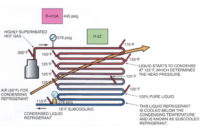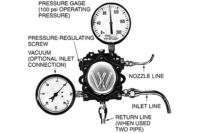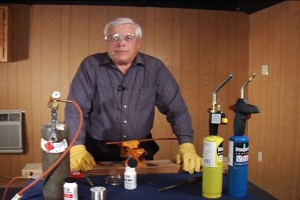Bob is a service technician who is well trained and nationally certified. However, he has sometimes suffered from the same confusion that all technicians occasionally do — the facts that he gathers may or may not point to the obvious cause of the problem or the best solution. But Bob has had something that no one else has. He recalled his long-time HVACR mentor and imagines him accompanying him as “Btu Buddy,” someone who reminded him to take time to stop and think before rushing to judgment, helping keep him on the right track, even with facts that are confusing.
Now, Bob’s company has promoted him to help train a new employee, right out of a school specializing in HVAC, just like Bob was. Bob is now Tim’s Btu Buddy. Tim is anxious to travel with Bob. Tim realizes that he is right out of school, with the theory and lab work that he accomplished in school, but still needs help. He knows that he worked with many of the components of the systems in the school, under ideal conditions with good light and air conditioning. Now it is into the field, sometimes under the house with poor lighting, or out on the rooftop in the sun, where the real action is. He is naturally and normally reluctant, but he has Bob to help guide him.
Bob and Tim were on their way to a service call with a new customer. When they got to the job, the customer explained, “The unit was not cooling and I had a company come out for a service call. I did not really like the looks of the company representative. He was sloppy and his truck looked like a junk heap. Even my neighbor commented on it. The unit seemed to work OK last week when it was a little cooler outside, but this week it has warmed up about 15 degrees and the unit is not functioning as well. It also has a large puddle of water under it that will not go away. A friend recommended your company. Please see what you can find.”
Bob and Tim went around the house to the outdoor unit and right away they noticed the puddle of water under the unit. Tim said, “I bet the last technician overcharged the unit because it was mild weather.”
Bob said, “I bet you are right. We are going to have to install gauges, so let’s check the superheat and subcooling and see what we have going on. The system has an orifice metering device and uses R-22, so it should be simple to see just what is going on. The temperature is 93°F, so the system should be operating at about design conditions.”
They installed gauges and found that the unit was overcharged. Tim said, “Look at the pressures:
1. The suction pressure is 79 psig, corresponding to 47°, and the superheat is 0°.
2. The head pressure is 320 psig and the subcooling is 30°.
“The system has way too much refrigerant in it. What are we going to do, start removing refrigerant?”
Bob said, “No wonder the system is not cooling correctly with a high evaporator temperature. It is very hard to reach the correct charge by removing refrigerant. It is much easier to charge refrigerant into the system to the correct superheat and subcooling. Let’s get the recovery unit and remove some refrigerant and then add back to the correct charge.”
They connected the recovery unit, shut the system down, and then started the recovery unit. They carefully removed one pound of R-22 and Bob said, “Shut off the valves on the recovery unit and start the system up and see what the superheat and subcooling are.”
They started the system and let it run for about five minutes, and Tim said, “The suction pressure is 65 psig with 20° superheat and the head pressure is 250 psig with 3° of subcooling. Let it run for a few more minutes, but it appears to be slightly undercharged now.”
They let it run for a few minutes and checked again and there was not much change, so Bob said, “Charge some vapor into the system to the correct temperatures and pressures.”
Tim charged the system until the suction pressure was 68 psig with a superheat of 12° and the head pressure was 275 psig with a subcooling of 11° (Figures 1 and 3) and he said, “Well, I guess we are done with this job. Do you want me to disconnect and pack the equipment up?”
Bob said, “You better stop and think of one more step that we should check.”
Tim asked, “What else could there be to do?”
Bob said, “Could we have removed refrigerant oil from the system, and how much if we did remove some?”
Tim said, “Well, I guess we could have removed some. How would we know how much?”
Bob said, “This recovery unit has an oil separator to remove oil from the recovered refrigerant. Get the glass measuring cup from the truck and gently open the drain valve on the bottom of the recovery unit and see what we see.”
Tim put the measuring cup under the drain valve and slowly opened the valve and said, “This valve is under pressure and foam is coming out.”
Bob said, “Let it run very slowly until it stops foaming and only vapor is bleeding out. Remember, we started with a clean recovery unit.”
Tim let the oil run and foam for a few minutes, then he let the foam settle down and said, “It looks like there is about an ounce of oil in the container. Is that enough to make a difference?”
Bob said, “No, I think we are good with what is in the system. I was concerned that there was so much liquid circulating in the system that we would pull out too much oil. I believe the system is safe with one ounce short. Let’s button this up and move on.”
Tim added, “Well, that was another learning experience. What would we have done if this had been a thermostatic expansion valve (TXV)?”
Bob said, “Let’s talk about that next time.”
Publication date: 9/22/2014
Want more HVAC industry news and information? Join The NEWS on Facebook, Twitter, and LinkedIn today!












